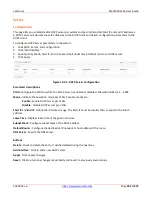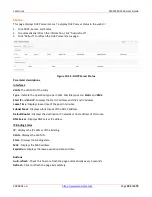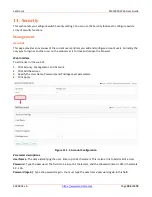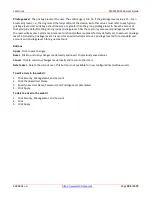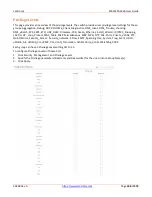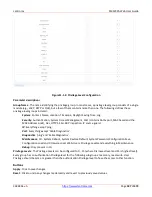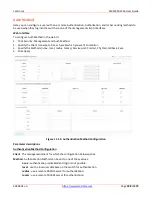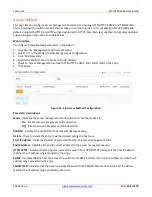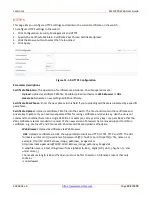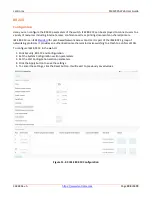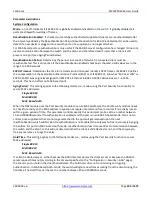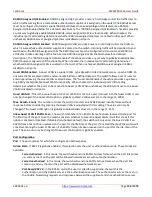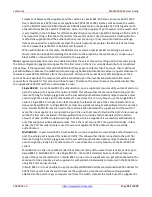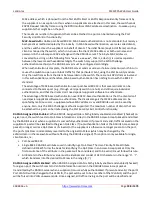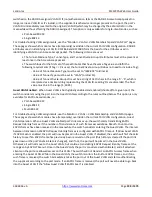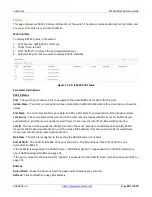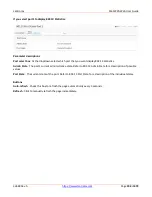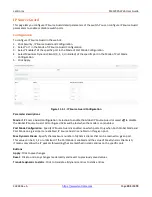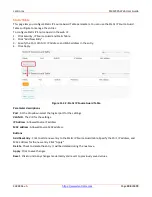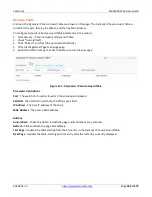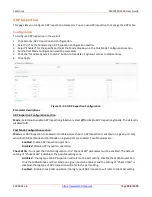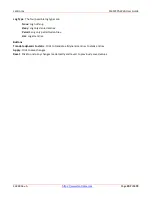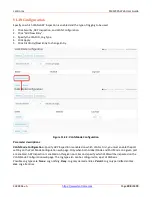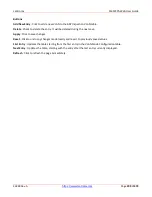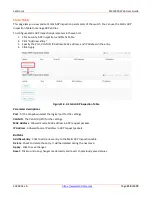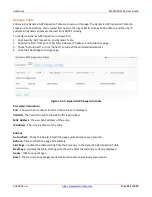
Lantronix
SM12XPA Web User Guide
33848 Rev. A
Page
196
of
473
RADIUS-Assigned QoS Enabled
: RADIUS-assigned QoS provides a means to centrally control the traffic class to
which traffic coming from a successfully authenticated supplicant is assigned on the switch. The RADIUS server
must be configured to transmit special RADIUS attributes to take advantage of this feature (see RADIUS-
Assigned QoS Enabled below for a detailed description). The "RADIUS-Assigned QoS Enabled" checkbox provides
a quick way to globally enable/disable RADIUS-server assigned QoS Class functionality. When checked, the
individual ports' ditto setting determines whether RADIUS-assigned QoS Class is enabled on that port. When
unchecked, RADIUS-server assigned QoS Class is disabled on all ports.
RADIUS-Assigned VLAN Enabled
: RADIUS-assigned VLAN provides a means to centrally control the VLAN on
which a successfully authenticated supplicant is placed on the switch. Incoming traffic will be classified to and
switched on the RADIUS-assigned VLAN. The RADIUS server must be configured to transmit special RADIUS
attributes to take advantage of this feature (see RADIUS-Assigned VLAN Enabled below for a detailed
description). The "RADIUS-Assigned VLAN Enabled" checkbox provides a quick way to globally enable/disable
RADIUS-server assigned VLAN functionality. When checked, the individual ports' ditto setting determines
whether RADIUS-assigned VLAN is enabled on that port. When unchecked, RADIUS-server assigned VLAN is
disabled on all ports.
Guest VLAN Enabled
: A Guest VLAN is a special VLAN - typically with limited network access - on which 802.1X-
unaware clients are placed after a network administrator-defined timeout. The switch follows a set of rules for
entering and leaving the Guest VLAN as listed below. The "Guest VLAN Enabled" checkbox provides a quick way
to globally enable/disable Guest VLAN functionality. When checked, the individual ports' ditto setting
determines whether the port can be moved into Guest VLAN. When unchecked, the ability to move to the Guest
VLAN is disabled on all ports.
Guest VLAN ID
: This is the value that a port's Port VLAN ID is set to if a port is moved into the Guest VLAN. It can
only be changed if the Guest VLAN option is globally enabled. Valid values are in the range [1; 4094].
Max. Reauth. Count
: The number of times the switch transmits an EAPOL Request Identity frame without
response before considering entering the Guest VLAN is adjusted with this setting. The value can only be
changed if the Guest VLAN option is globally enabled. Valid values are in the range [1; 255].
Allow Guest VLAN if EAPOL Seen
: The switch remembers if an EAPOL frame has been received on the port for
the life-time of the port. Once the switch considers whether to enter the Guest VLAN, it will first check if this
option is enabled or disabled. If disabled (unchecked; default), the switch will only enter the Guest VLAN if an
EAPOL frame has not been received on the port for the life-time of the port. If enabled (checked), the switch will
consider entering the Guest VLAN even if an EAPOL frame has been received on the port for the life-time of the
port. The value can only be changed if the Guest VLAN option is globally enabled.
Port Configuration
Port
: The port number for which the configuration below applies.
Admin State
: If 802.1X is globally enabled, this selection sets the port's authentication mode. These modes are
available:
Force Authorized
: In this mode, the switch will send one EAPOL Success frame when the port link comes
up, and any client on the port will be allowed network access without authentication.
Force Unauthorized
: In this mode, the switch will send one EAPOL Failure frame when the port link
comes up, and any client on the port will be disallowed network access.
Port-based 802.1X
: In the 802.1X-world, the user is called the supplicant, the switch is the
authenticator, and the RADIUS server is the authentication server. The authenticator acts as the man-in-
the-middle, forwarding requests and responses between the supplicant and the authentication server.

